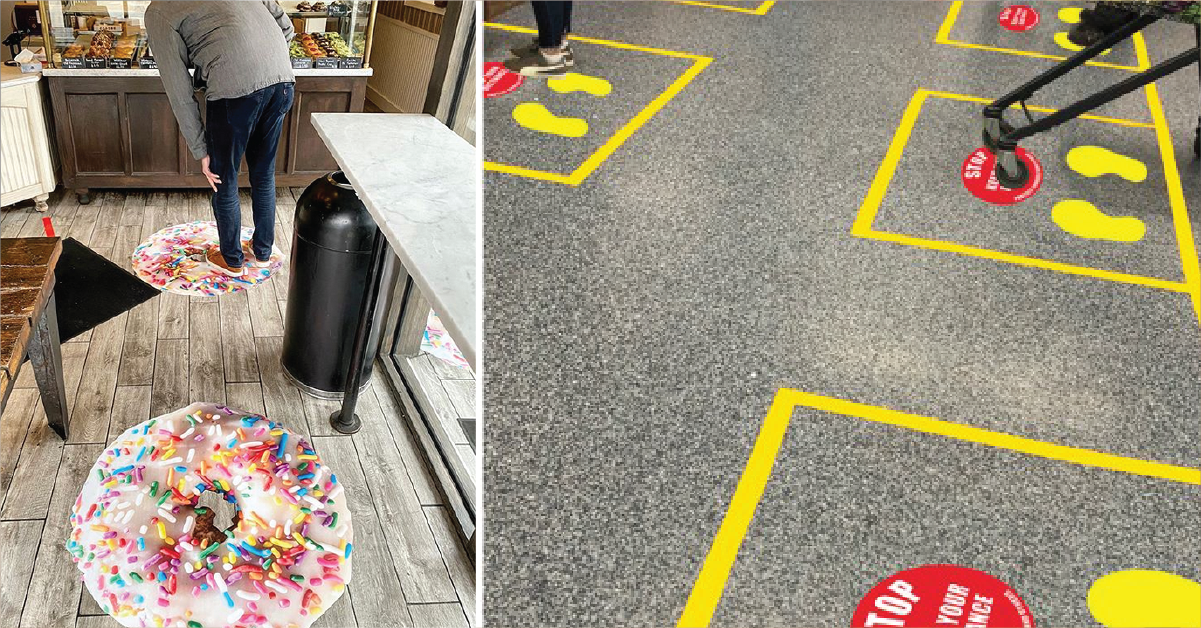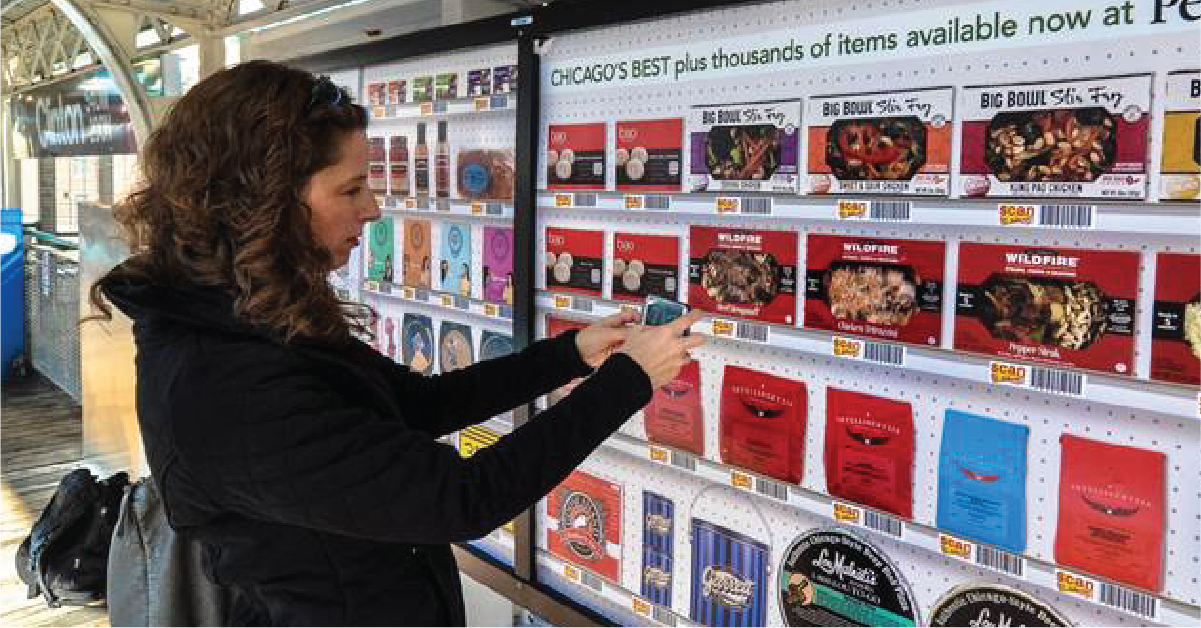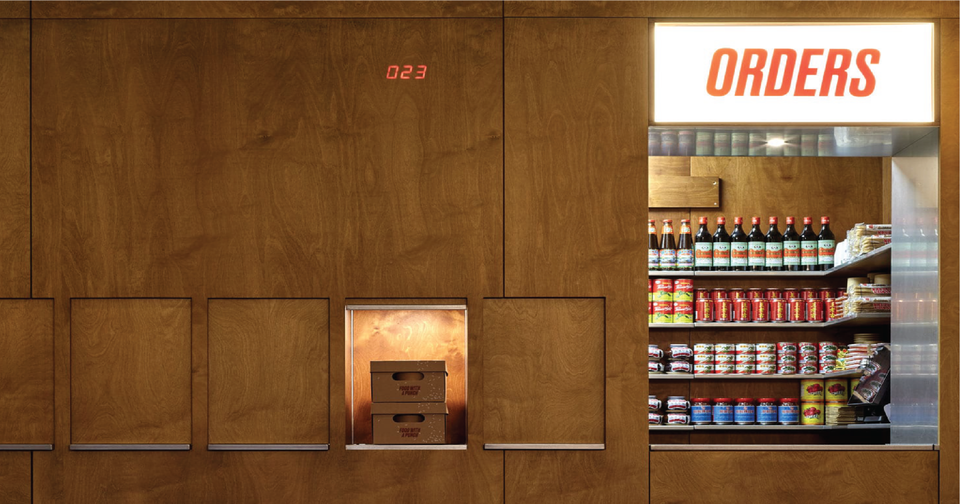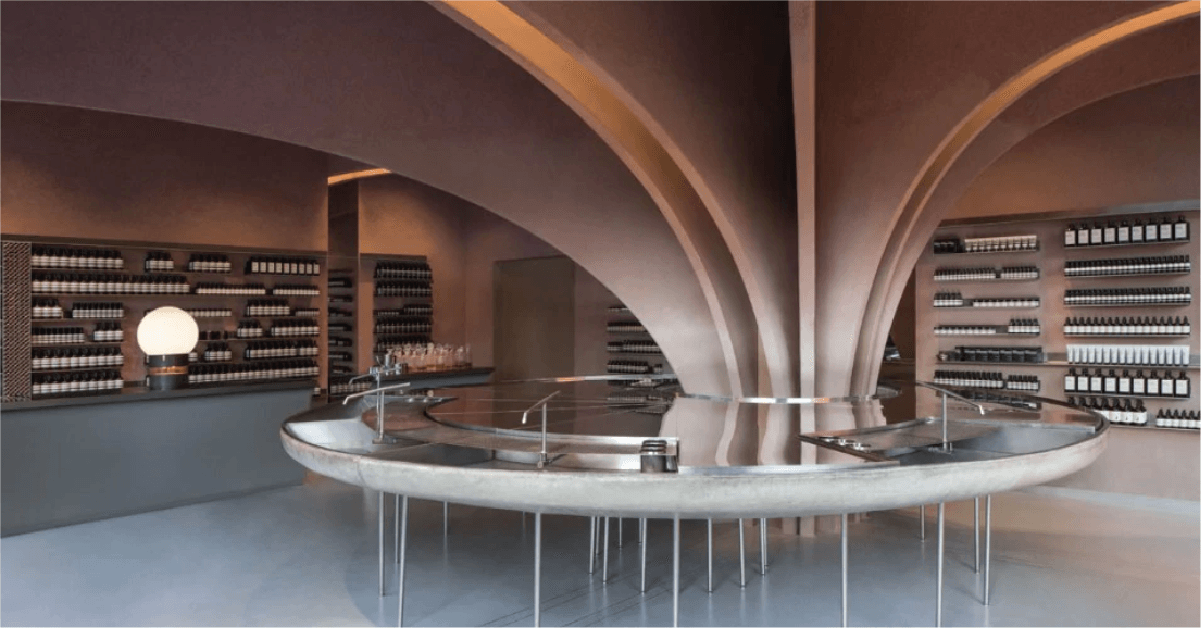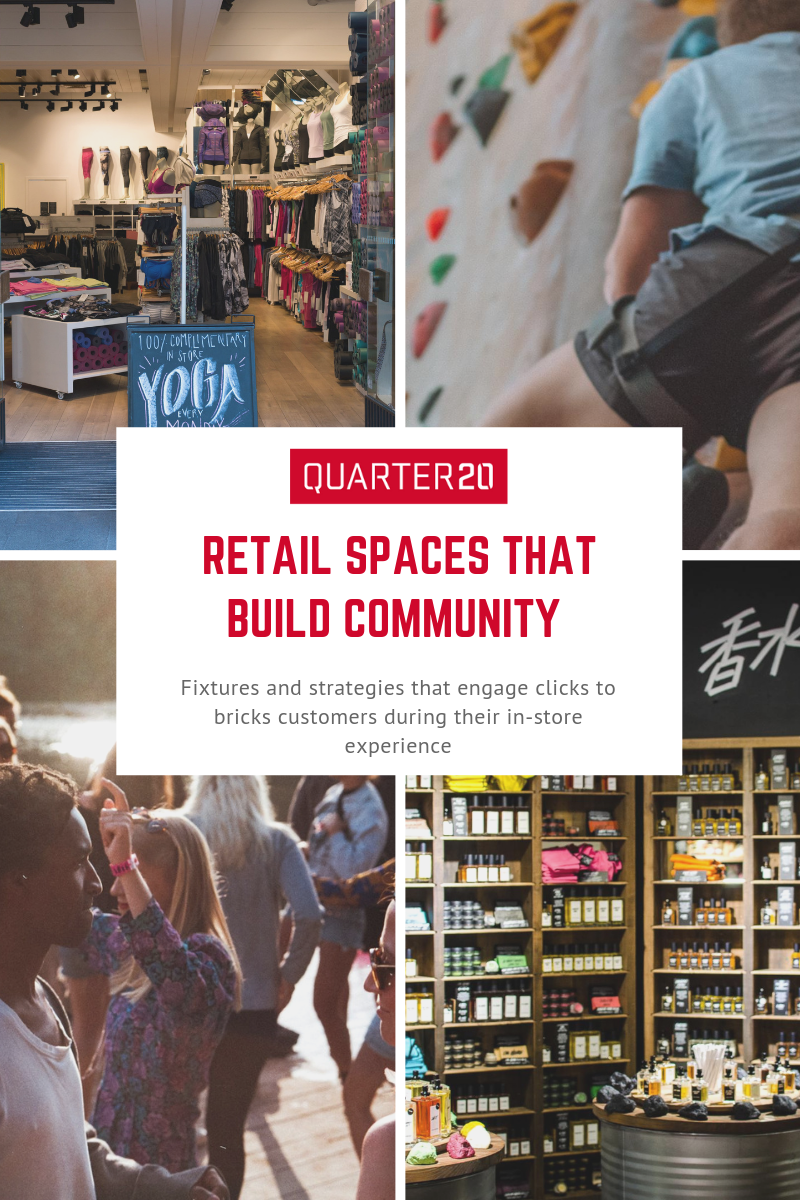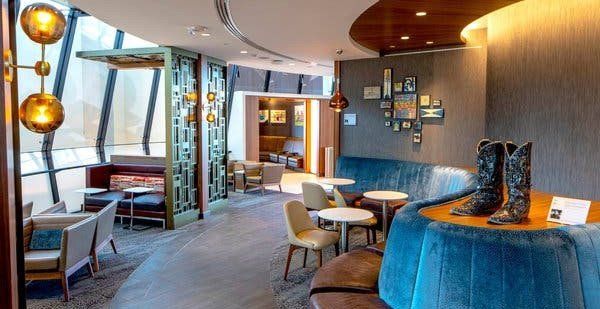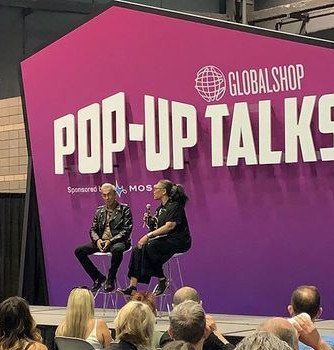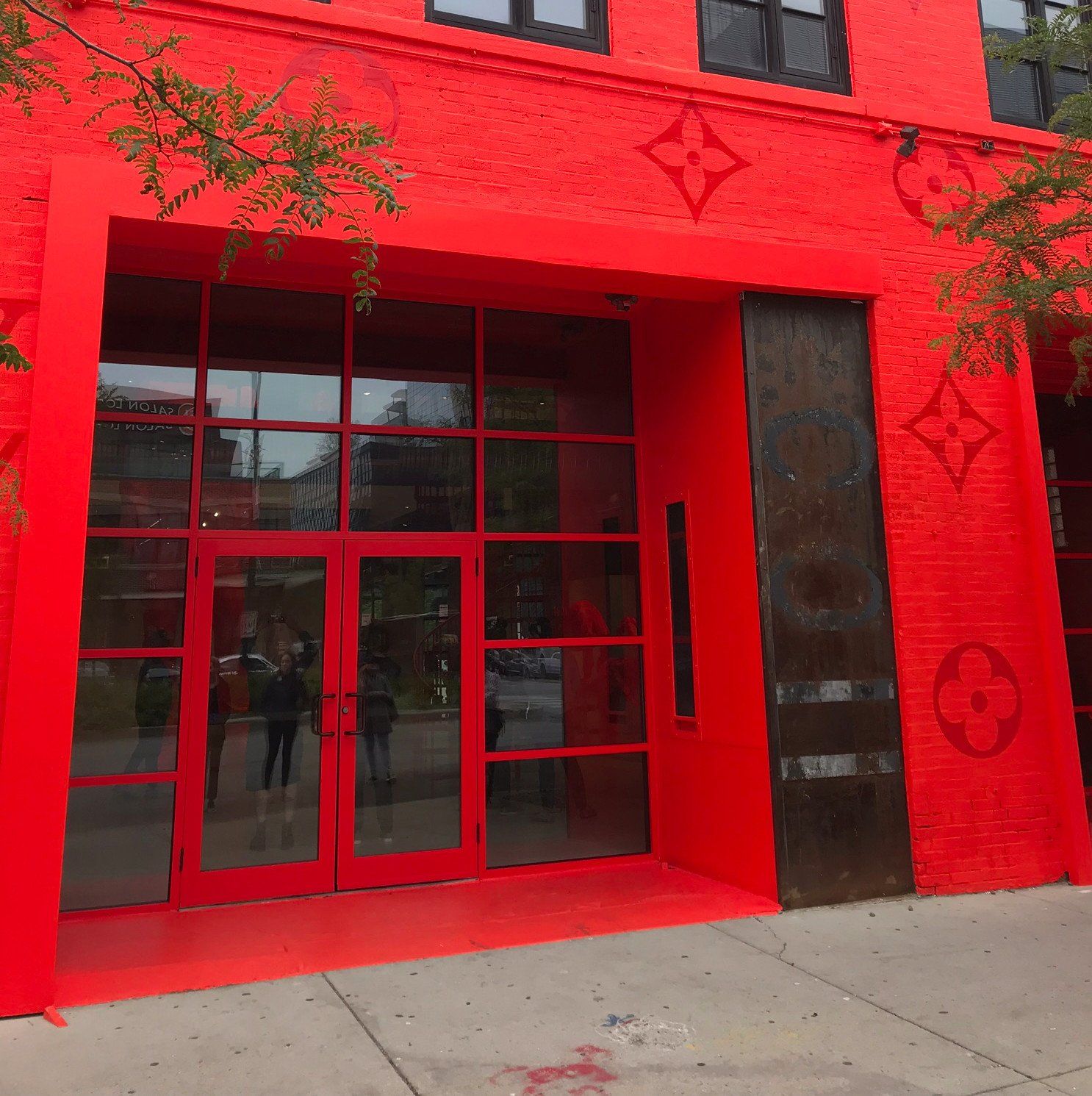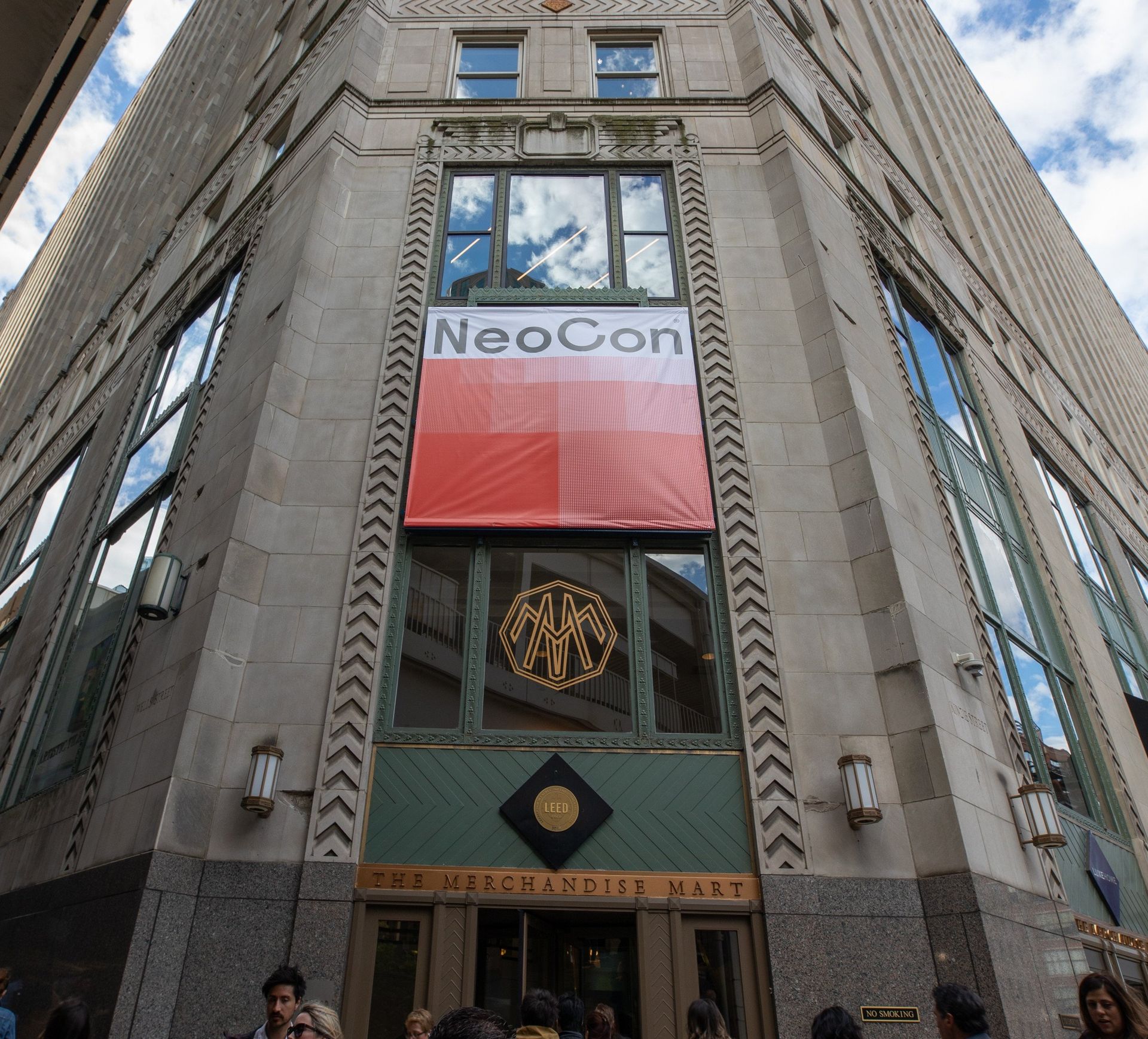Retail post COVID-19
Jonathan Honor • April 10, 2020
A multi-tier approach to dealing with uncertainty

Everyone is grappling with the realities of this pandemic. What it means for their business, customers, employees, and the future of their brand is uncertain. As dire as that sounds, always keep in mind, this will all end eventually. "Social distancing" and "shelter in place" orders will end. People will leave their homes to seek out social interaction with rekindled interest. That interest will be more than just a desire to no longer have a screen as a dinner companion. For many, it will be returning to brick and mortar retail.
Tier 1 - What you can start doing now
If you are currently keeping your stores open, tier 1 consists of how to meet the CDC, WHO, and local health guidelines. The foundation of any reasonable response is centered around direct communication with your customers and being flexible for whatever comes next. Tier 1 focuses on experimenting with communication to find what works best for you and your brand while allowing you to still adapt to new information as it develops. Change is confusing for everyone, especially with so many conflicting options about how to act. You cannot rely on conventional social norms to build on to determine how people will act in an indoor public space. Focus on clear wayfinding communication in your space at each step in the process - entice, enter, engage, exit, extend. When people enter- first lay the groundwork for what people should expect in-store during this event, direct different shopper types (pick-up, returns, shopping, check out, etc.), explain what people do when they wait, dictate how far apart they wait from each other, explain what is next after each step, and then ultimately how do they leave the store safely.
A few ways to achieve quick changes to address today's concerns are by rearranging retail layouts patterns to make more space and prevent bottlenecks. Typically, high traffic areas are packed with visual merchandising. For keeping spaces clean and open, graphic merchandising and product storytelling that hit the right tone will serve you better than cross-merchandising. Being upsold will turn people off. Messages around what you are doing now to keep your store safe or your approach to addressing COVID-19 can reassure your customers that you are looking out for them and appreciate them. At each step of the shopper journey, always keep in mind how close each participant will be to each other. For instance, waiting areas will require replacing banks of chairs with graphic tools like temporary floor decals to show proper distancing and freestanding signage in conjunction with well-placed moveable physical guides like stanchions. People will need the cues at each point of where to stand and where to move. These are all easy to move and repurpose. While at check out, distance or plexiglass barriers between a customer and employees along with graphic explanations of where to stand and what are the safe steps to take will make a new process clearer. Lastly, look at the rate people move through your space and what steps you need to take to slow that without boring your customers. A layout that allows for multiple customers to be in your space but not near each other is possible for some, and others may have to look at phasing shopping or accelerating aspects like pick up or altering hours to allow at-risk customers a safe period to shop. If your space is very small and you have a way to directly talk to interested customers, setting up shop by appointment may help give your customers the best possible experience while allowing you to properly reset the space each time. Right now, the goal is to make everything clear and uneventful but it is also an opportunity to find what types of communication people respond to and develop a larger cohesive plan to expand what is working into set practices.
Tier 2 - Mid-level alterations
A step up from experimental communication and clearing space is to setup physical manifestations of your effort and to ensure your customers feel safe. Tier 2 is building on tier 1 but factoring in a longer timeline, which allows you to consider more permanent options to implement new store processes. These are steps to set in motion while your stores are open or to consider while your stores are closed and looking to reopen soon. At this point, you have time to order sanitation kiosks, upgrade your stanchions to look less temporary, and create cohesive printed signs to better implement set paths through your space.
Brick and mortar's biggest strength over online is now one of its largest obstacles – lots of people touching your products. Tier 2's will address how to navigate the new balance retail needs to strike in the tenuous weeks after shoppers return to stores. Tier 1 is more about addressing needs of getting what they already know, tier 2 now opens up to customers exploring new items or giving it the final evaluation before purchase after looking online during their isolation. We will need to look at this barrier from several different angles. To start with, we will explore the boundaries to product merchandising. Do any of your systems carry the perception of being unsanitary? Packed together apothecary jars used to be a chic merchandising system. Now they may elicit fears that they are masses of hard to clean items. After the 1918 pandemic, the communal drinking cup- that everyone drank from at the fountain- went away. Something that was a common everyday interaction became unhygienic. Now is the time to give your merchandising systems a second look before your customers do it for you. Moving to items that should be touched by customers such as items to try on, stores can implement communication that items have been cleaned recently to help alleviate uncertainty for your customers. Once an item has been interacted with, what should customers do with it afterward? Setting up clearly visible steps such as sanitation bins for items can be one method for making the steps you're taking to protect them more visible to your customers. As you consider the products on your fixtures, you should also look at surfaces in your store. A brand's materiality is a long-debated topic but now your customers may worry about the ability to interact with surfaces that don't seem like they have been properly cleaned since the last pandemic. Beat-up wood tables may need to be reconsidered or have an intermediate material cover, like tempered glass over them. Some surfaces are hardy enough to look good while withstanding industrial cleaning agents while not looking like they belong in a hospital. Active antimicrobial nano particles can be embedded into countertops and high-traffic surfaces such as laminates and resins. Metals like Silver and copper- including its alloyed compatriots, brass and bronze- have natural antimicrobial properties. These materials carry the microbial fighting characteristics through the entire material vs. a coating which will need be maintained. Keep in mind these materials don’t make a surface clean, they only contribute to your larger efforts. The US CDC does not recommend these materials over proper personal hygiene and cleaning practices to reduce the spread of contagions. Also, protective screens do not have to look like all you can eat buffet sneeze guards or bulletproof glass 24hr gas stations. Each material type can have viruses, bacteria, and other microorganisms living on them for hours, days, or even weeks. The actual and perceived hygienic qualities of a material will be a part of considerations for the near future. Our goal is to balance the physical requirements for everyone to be safe and have your store be accessible while not losing sight of telling your brand's story.
Tier 1 explored the need for direct communication. Tier 2 is where you should be exploring a cohesive in-store communication plan that spans all graphic content, wayfinding, and employee talking points. Omni-channel is the term-du-jour. Your brand will dictate the tone and type of communication. You also know what platform types your customers most respond to as well. With these tools you can explain what you’re doing to clean your stores – frequency and intensity- to protect your shoppers, what steps shoppers can take to protect themselves, what your employees are doing, or any motivating stories that reflect how your brand is uniquely dealing with this situation. Now is a time where showing you have all your duck in a row really counts.
Getting creative with personal sanitation options. Moving from the quick drop in hand sanitizer dispenser to a more integrated option will help normalize this essential ritual. It is also a habit that- again is essential to combat this virus -which will start to slip as time goes on. Making options readily available and thoughtfully distributed, will help make hand washing second nature. Depending on your space you can look to dispensers which are free standing, wall mounted, or integrated into fixtures. Locations that are purposeful will make the difference – enter, engage, exit. When a customer enters the threshold of your space they can be greeted with a warm welcome, an explanation of your new format, and a complimentary hand washing station. As they move through the space different types of shoppers will engage with your space differently. A pickup shopper will present their phone to show a receipt, UV phone cleaning stations will offer a thoughtful touch after the transaction is finished. When a shopper exploring your space handles a product, they could use a touchless hand sanitizer dispenser that is close at hand. Dressing rooms are also a great pause moment to offer hand sanitizer and a UV phone and change station. In the coming months we will see many companies announce options for hand and face personal protective equipment (PPE) that won’t look like medical gear for your employees and can be c. The right mix of approaches in a balanced integrated form will underpin your emphatic approach to customer concerns.
The final area of tier 2 is about the layout of your stores. As in tier 1 people will need to move through your space differently. You will not need to blanket your space with 6-10' safety bubbles but people will not be ready to bunch together as they did before. If we are honest, corralling people together wasn't a great experience before. A few ways this new space planning might manifest will be with how experiences and categories are distributed around a store. Milling in spaces will not be as common in the near term. Tracing several purpose driven paths through your space is one approach so that a grab and go shopper is not over lapping with someone who is seeking help or on a set path to find something particular. If you already know your key shopper journeys, consider making common touch points across all shopper journeys more frequent so multiple people don’t get stuck in the same space. When it comes to merchandising with several paths, having large visual blocks of a product type in a single category or large single story moments work when multiple people can stand shoulder to shoulder, but now smaller distributed personalized groupings will be needed. Smaller groupings paired with good stories will serve to spread people out and still give an opportunity to delight customers with new ideas. As with the apothecary jars, dense collections of products may elicit the same perception of being unsanitary. Adding options to have items pulled by an associate or where to find them will be key to a multiplied layout. Open up waiting spaces and main thoroughfares so that anyone in your store has a way to avoid others and reduce bottlenecks.
The final area of tier 2 is about the layout of your stores. As in tier 1 people will need to move through your space differently. You will not need to blanket your space with 6-10' safety bubbles but people will not be ready to bunch together as they did before. If we are honest, corralling people together wasn't a great experience before. A few ways this new space planning might manifest will be with how experiences and categories are distributed around a store. Milling in spaces will not be as common in the near term. Tracing several purpose driven paths through your space is one approach so that a grab and go shopper is not over lapping with someone who is seeking help or on a set path to find something particular. If you already know your key shopper journeys, consider making common touch points across all shopper journeys more frequent so multiple people don’t get stuck in the same space. When it comes to merchandising with several paths, having large visual blocks of a product type in a single category or large single story moments work when multiple people can stand shoulder to shoulder, but now smaller distributed personalized groupings will be needed. Smaller groupings paired with good stories will serve to spread people out and still give an opportunity to delight customers with new ideas. As with the apothecary jars, dense collections of products may elicit the same perception of being unsanitary. Adding options to have items pulled by an associate or where to find them will be key to a multiplied layout. Open up waiting spaces and main thoroughfares so that anyone in your store has a way to avoid others and reduce bottlenecks.
Tier 3 - Largest, most intensive steps
Our last tier focuses on more substantial process changes touched on in the previous tiers. Tier 3 goes beyond adapting what you have or used before to how your customers can best interact with your brand in this new normal. This level also is based on the resources you have. We are not flippant about the hard choices that must be made but also know that some brands will be caught flat-footed. COVID-19 will not be the only crisis we will all face. The next one won’t look like this, but this can be a moment to develop a groundwork that will be more flexible for what may come. We are going to look at a few possible examples of this level of thinking. In this section, we will address significant systemic changes that will allow the brands to adapt better going forward.
Retail is a social experience. Interacting with the actual product is one thing, but the level of service you offer instore is paramount and will continue to distinguish brick and mortar over the commodity of online shopping. The level of service is also the reason people will want to venture out to your stores. To further enhance the services you can offer to customers, bring in thoughtful, well developed digital tools to supplement the types of services that have been working for you up to this point. Customers queuing up at bulky POS is not going to sit well. The ability to interact on a 1:1 basis so that one employee can help a customer all the way through to check out without bringing more people or steps may be more appealing now. A flexible POS system that allows anyone to check out anywhere is no small undertaking. It involves overhauling almost every aspect of a business. It also requires an investment in tools to help employees have the information on hand so customers will want to interact with them.
Another significant undertaking will be if customers want clean product options. Before we mentioned visualizing the efforts you are making in-store such as telling the story, adding markers to packaging that it is clean, or places to put product that customers interacted with. A step further would be to have options for a personal interaction in-store with options to then move to a touchless and sanitized delivery. That could mean products deliver to home after seeing it in-store with a guarantee that it is safe. Looking at new packaging options for your products that are safer is a signal to customers that you have their safety in mind.
Not all the products you have are high touch, high service compatible items, but the touches you bring to having those items ready and accessible is a place where you can differentiate yourself. Running pickups through customer service desks or managing a curbside pick up over the phone is a way to get by for now, but to implement that program at scale will take a new approach. Developing set locations that are engaging can help make pick up more appealing. There have been efforts by larger retailers to bring automated lockers into the process. Walmart has set up a form of a lounge by their pick up lockers. Target has pick up beacons in their parking lot, which still require customers to have their phone scanned. Amazon has tried free-standing outdoor lockers, ones in partner retailers, and whole stores devoted to lockers. We think these are an interesting direction in a time where physical interaction is suspect but needs some help. Perhaps manned pickup windows will make a comeback.
Take a moment to also consider that the four walls of your store are not the limit of your experience. You may still want to limit the number of people you have in your store and need to have people outside. Thankfully, as the weather improves, that will be an option. People can make purchases or select items before they get in your store. You can also prompt direct purchases with smart ads in the area to catch foot traffic that cannot drop into your store. Peapod and Tesco experimented with facilitating online ordering with QR code enabled signage at public transit hubs a while back. Keep in mind shelter will also be a factor for these outdoor experiences, and every locality will have their own restrictions on these structures.
Take a moment to also consider that the four walls of your store are not the limit of your experience. You may still want to limit the number of people you have in your store and need to have people outside. Thankfully, as the weather improves, that will be an option. People can make purchases or select items before they get in your store. You can also prompt direct purchases with smart ads in the area to catch foot traffic that cannot drop into your store. Peapod and Tesco experimented with facilitating online ordering with QR code enabled signage at public transit hubs a while back. Keep in mind shelter will also be a factor for these outdoor experiences, and every locality will have their own restrictions on these structures.
When you are thinking of extensive changes, also look to your store structures. Many locations are set up with a rush to meet a holiday or peak shopping season, so considerations such as airflow are often low on the to-do list. Now is a time to consider if taking steps to improve indoor air quality can help with the feel of your spaces before they are fully open again. Improvements like this are very dependent on your location and lease restrictions. Installing windows or taking down interior walls can help flush out stale air. Taking steps to purify the air, such as new filtration systems integrated into your HVAC or stand-alone, can also increase the quality of your air exchanges. These steps will reduce the amount of air containing microorganisms and help with how the air quality feels. This is also the point to consider if permanent hand washing stations will enhance your customers experience. Coming back to the CDC’s and WHO’s recommendations that handwashing is the best way to reduce the spread of contagion, we would suggest giving this a serious look. Brands like Aesop have integrated beautiful sinks into their spaces as focal points of their diverse locations. They are selling soap so it fits, but retailer may find themselves in the business of selling peace of mind. Running plumbing for new sinks is much easier to do when your space is already being working on rather than as a retro fit down the road. If you are planning to remodel you spaces during this time, think of any future plumbing needs.
Lastly, evaluate how your supply chain weathered this event and take steps to strengthen it or develop a plan for future events. Investigating new options is an intensive effort. Right now, you can establish criteria for evaluating new vendors and start making a list of candidates. As things settle down and business opens up more, you can begin to begin requesting information. With the further development of robust video conferencing adoption, you don’t need to travel around the world to get information anymore. You should also ask your trusted vendors to help you with suggestions and contacts to see what resources you may not have considered. Most of all, this exercise is about understanding how your supply chain and vendors can flex, so when the time comes, you have a better plan to implement.
Quarter20 is built on services to help our customers to make the difficult task of making amazing retail possible. We will keep doing that even with the challenges of a pandemic. We are always here to help our customers identify what these different tiers will look like for them. If this frame work resonates with you and you want help developing your plan forward, we are ready to help you come out of this stronger than before.
Quarter20 is built on services to help our customers to make the difficult task of making amazing retail possible. We will keep doing that even with the challenges of a pandemic. We are always here to help our customers identify what these different tiers will look like for them. If this frame work resonates with you and you want help developing your plan forward, we are ready to help you come out of this stronger than before.
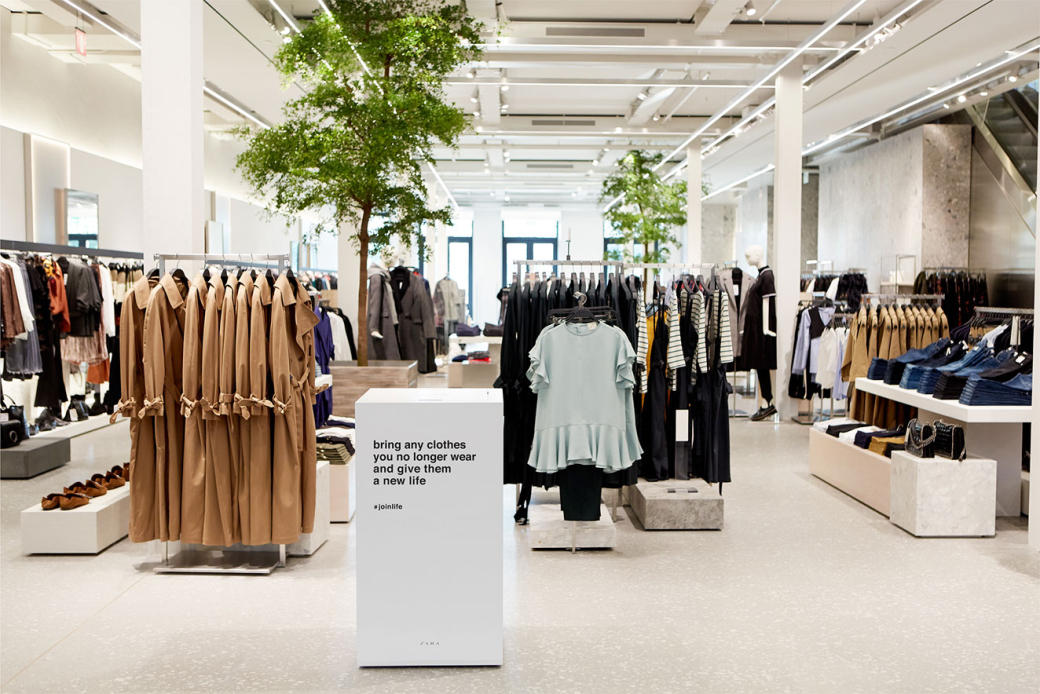
Take a look at how these five major global brands are focusing on sustainability in their retail building and design strategies. From a focus on earth-friendly fixtures and materials to customer engagement with sustainable initiatives in-store, these brands are making sustainable retail design a priority.
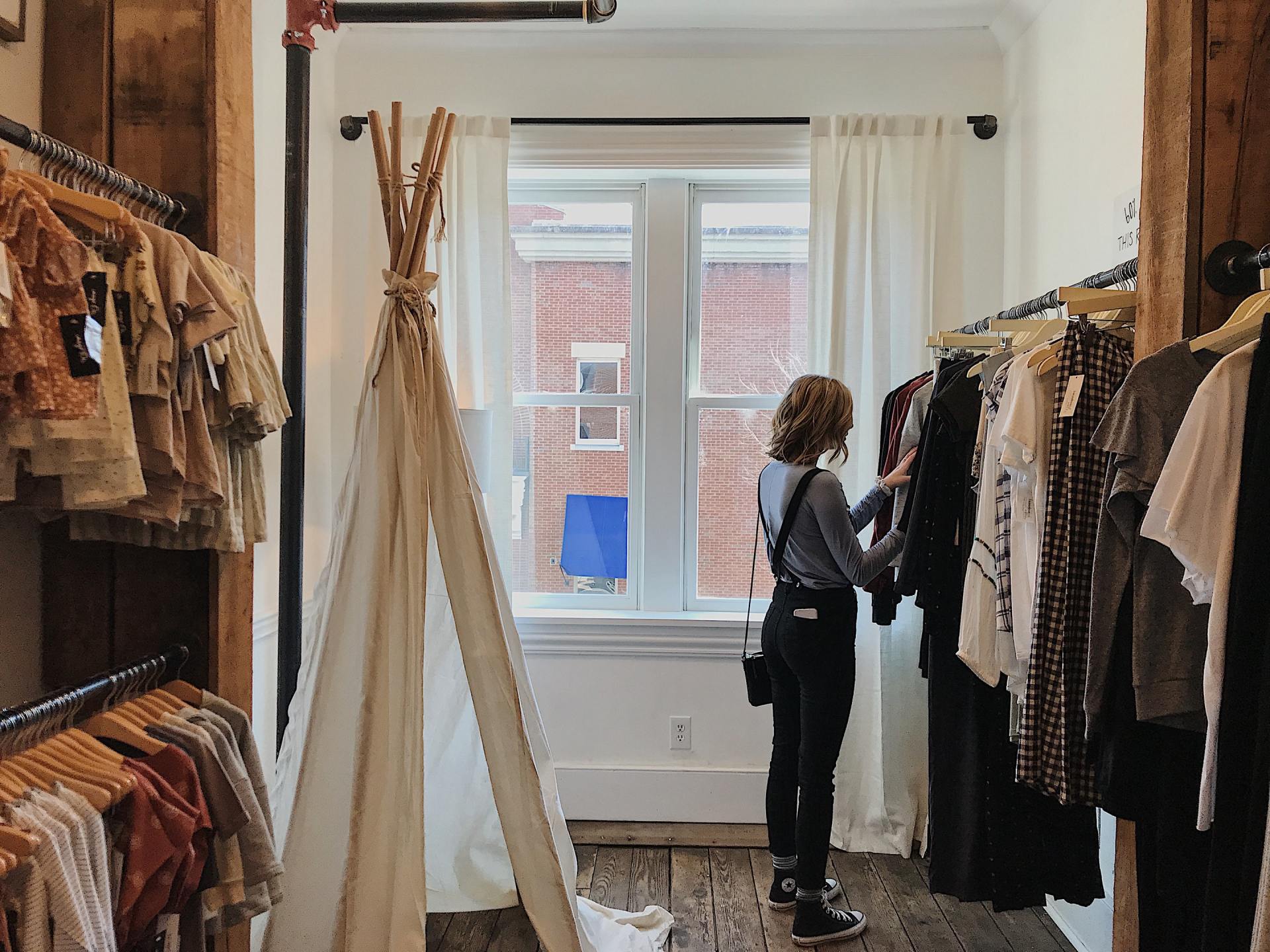
The Case For Convenience. How These Retailers Built Convenience Directly Into Their Brand Experience
Read how these major brands have built convenience directly into their retail brand experience.
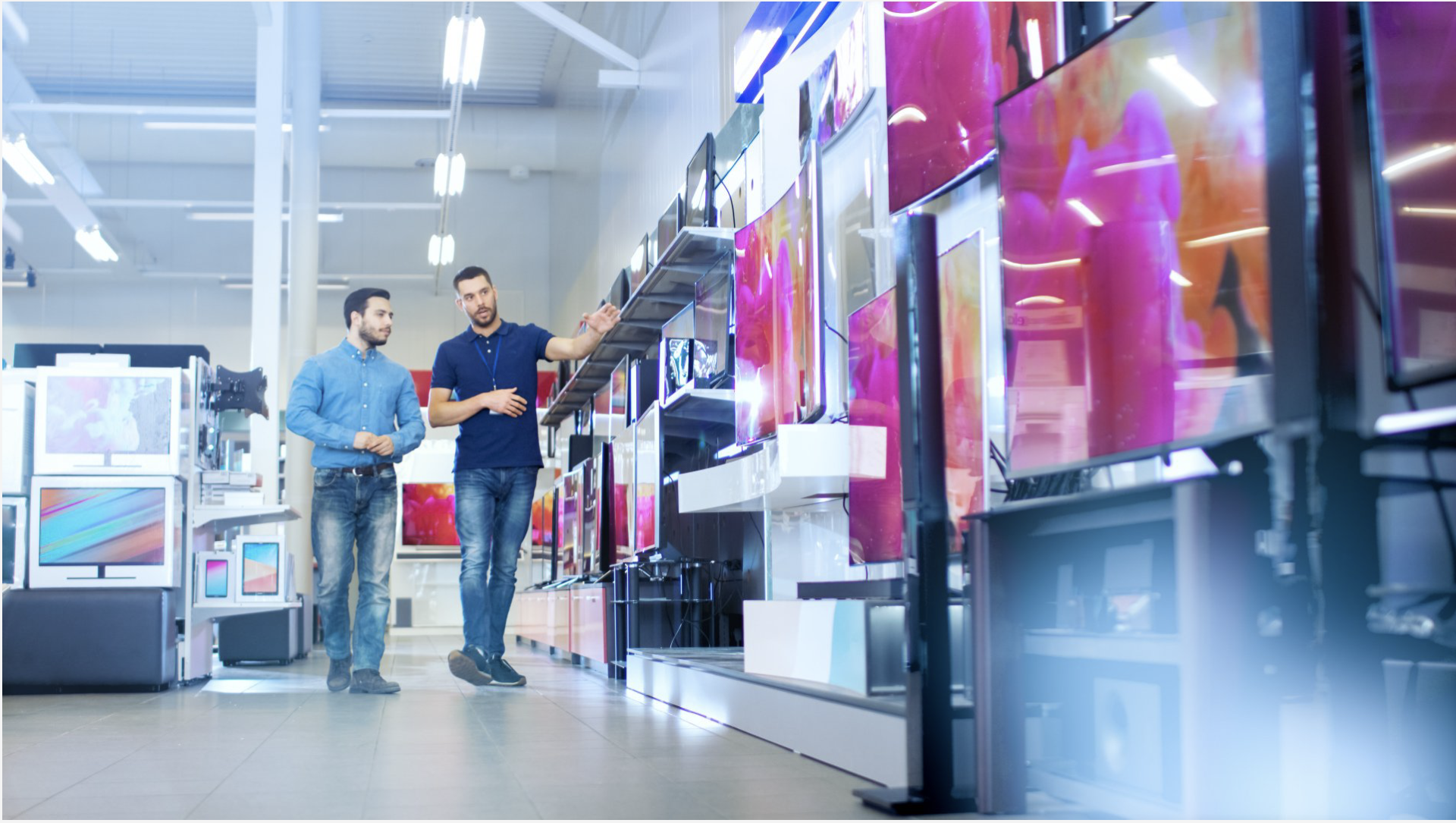
The evolution of the retail market has created a chasm between the online and offline experience. The transactional nature of e-commerce has created a consumer expectation of ultra-convenience, which retailers are incorporating at all levels of the purchase process. In the digital age of convenience, shopping online and in-store from the same retailer can feel different resulting in the massive adoption of technology to help build convenience in shopping experiences in online stores and brick-and-mortar stores. The following tips highlight the various ways that retailers can build a convenience store concept among their customers.
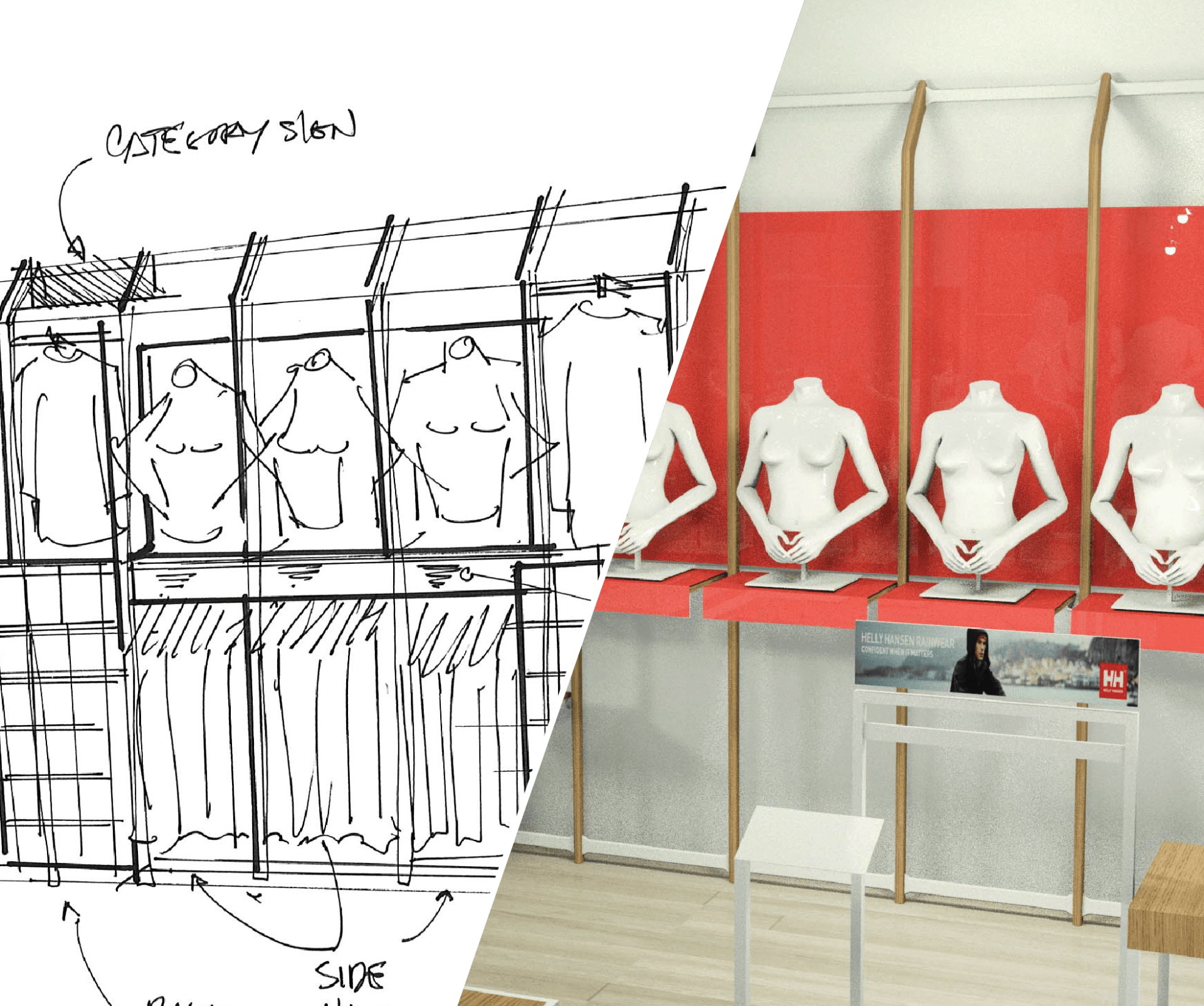
Anyone who has ever opened retail stores knows that success requires more than just renting space and opening the door. Taking a brand to new places can open the door for creativity in retail design. At Q20 we ask ‘what if’ a lot. We want to create new retail experiences that engage our client’s customers like never before. While asking ‘what if’ can expose us to the unknown, we support that question with a solid process that allows us to assist clients at any stage in their retail project. In this way, we access our team’s creativity within a structure that keeps projects on time, and on budget! We would like to offer some insight into our process to show how it supports creative new ways to deliver world class retail experiences. Take a look at the brief descriptions below and get in touch if we can help you in any of these stages for your retail development project. 1 . Design Engineering Retail store design starts with conceptualizing how to best use the space in order to fulfill the retailer's goals. We work together with our clients to establish those goals, researching sources for the right materials. Fixture requirements, modularity and capacity are all taken into consideration, ensuring adequate fixtures to properly display all of the store's goods. 2. Identify the Environment Our team works with clients to plan the use of the available space. This includes the marketing side of planning window display areas and merchandising for the retail store design. While this is happening, construction teams are working on site evaluation, permitting and regulatory factors that might affect the project. Because of restrictions imposed by the environment, each retail store design is unique. Restrictions must be taken into account early in the process, to ensure the best possible results for the retail construction and design project. 3. Engineering and Estimating We often explore a number of different options, seeking a mix that fits the client's budget. Drawings, specifications and initial pricing are prepared in this stage. At this point, clients make a decision on whether to build custom fixtures, source fixtures domestically or source them overseas to best meet their time and cost requirements. 4. Prototyping Fixtures With the concept well in hand, prototype sketches or models will be prepared, in a "proof of concept" process. All elements of the design must be vetted, to ensure that the fixtures will fit in the available space, provide the overall aesthetic appearance desired, and provide necessary display space. Further design modifications may be made based upon the results of the prototyping process. 5. Client Approval While the design process takes shape between the contractor and the retailer, this decision rests solely upon the customer's shoulders. Even so, like other stages of the process, it isn't about accepting or rejecting the overall concept, but rather seeking insight to further refine the design and make any additional changes that the customer deems necessary. 6. Engineering Updates Based upon the collaborative effort of the client approval process, engineering works to incorporate any necessary changes to the retail store design. Further drawings or prototypes are produced, as required, so the final design meets the customer's needs. 7. Fixture Production With approval of the design complete, it is time to begin production. We always start out with a first fixture fabrication to check that the design can be completed per the drawings and that the finished product will be the same as the prototypes. Potential problems with the manufacturing process are identified and rectified at this stage. Once everything looks good, any custom materials or tooling is created, and fabrication of the store's fixtures begins. There are two key elements in this stage of the process: quality control and transparency. It is the responsibility of our quality control team to ensure that each finished fixture matches the intent of the design. At the same time, the production process must be shared with the client, so they can see the progress and verify that the finished product is delivered to specification. 8. Retail Construction Management All the preceding steps lead up to the build-out. Once complete and the fixtures are installed, the retail store design will meet our customer's needs and provide a retail space which is attractive, effective and experiential. Installation of the fixtures is the high point for everyone in the team, as it is the cumulative result of the planning that went before. All fixtures are inspected to ensure their function and that they reflect the concept. We maintain close contact with our client through their opening or reopening to support them with any additional details needed to help ensure their success.
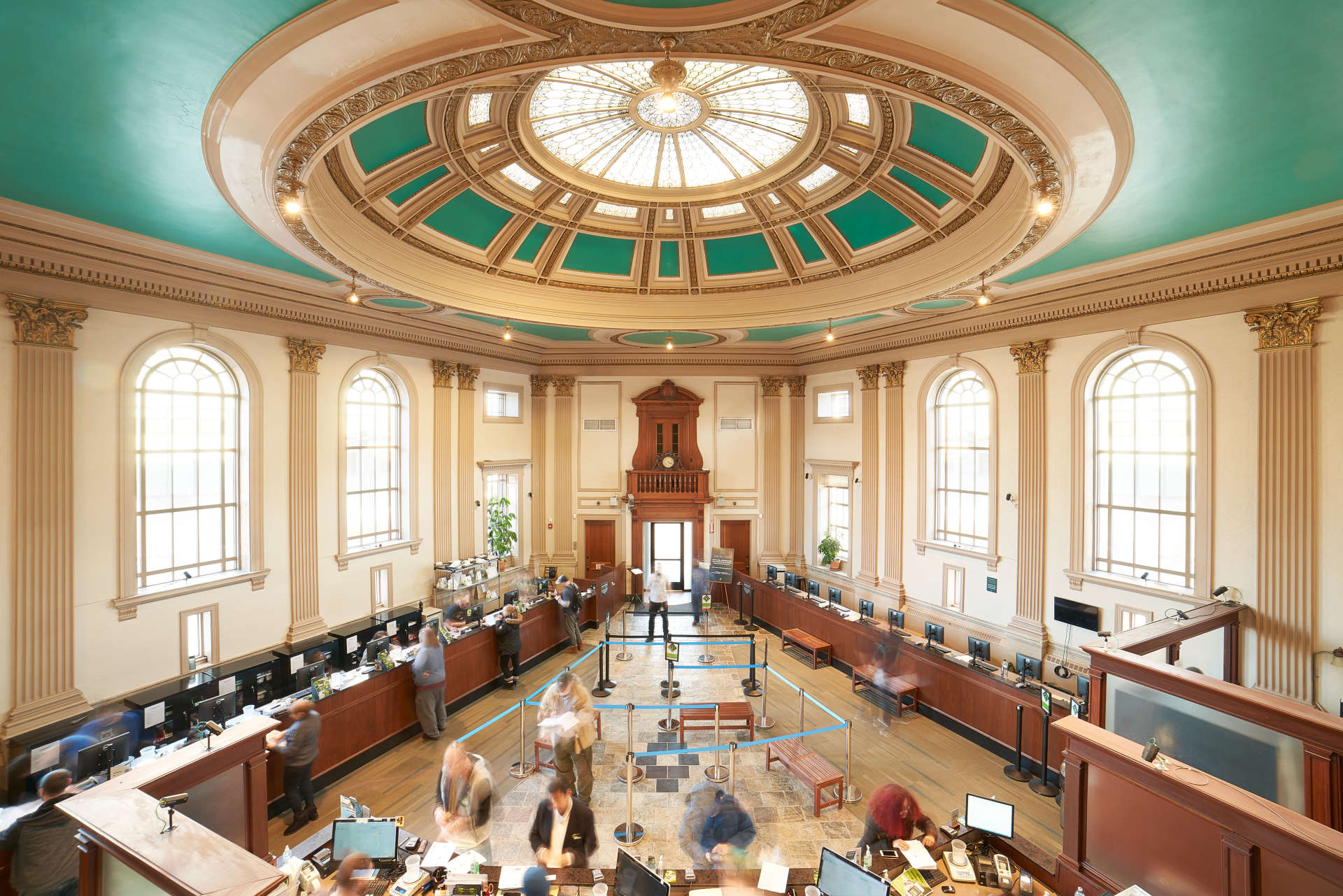
As legal cannabis sales continue to grow, there's a movement among dispensaries to improve the perception of cannabis, from educating consumers to providing a luxury buying experience. There is a growing trend across the industry to create spaces that are cutting-edge design statements and feature elegant décor and a one-of-a-kind, branded luxury buying experience. Cannabis dispensaries are giving designers like us a new canvas to explore. From incorporating natural materials like rich woods, stone, and bright lighting, to creating retail establishments in alternative spaces - creative dispensary design is working to brand cannabis retailing as a luxury experience. We are more than up for that challenge.
